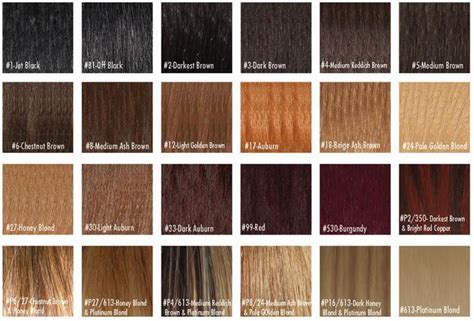Introduction

Human hair color, a captivating and multifaceted aspect of human diversity, has sparked fascination and intrigue throughout history. From the fiery hues of redheads to the enigmatic allure of blondes and the classic sophistication of brunettes, hair color has played a significant role in shaping human identity, cultural expression, and even perception. This comprehensive guide delves into the science, cultural significance, and evolution of human hair color, providing a rich tapestry of knowledge for all hair color enthusiasts.
The Science of Hair Color: Melanin, Genetics, and Individuality
At the heart of hair color lies melanin, a pigment produced by specialized cells within hair follicles. Two types of melanin determine the range of hues in human hair: eumelanin (dark pigments responsible for brown and black colors) and pheomelanin (red pigments responsible for blonde and red shades). The proportion and distribution of these pigments within each individual hair strand determine the unique color we observe.
Genetic factors play a crucial role in the inheritance of hair color. Genes located on specific chromosomes determine the instructions for melanin production, resulting in a wide spectrum of shades and variations. However, environmental factors, such as sun exposure and diet, can also influence the color and texture of hair over time.
Cultural Significance: Hair Color as an Expression of Identity
Beyond its biological basis, hair color holds profound cultural significance, often reflecting societal norms, beauty standards, and even stereotypes. In many cultures, blonde hair has been associated with youth, beauty, and femininity, while red hair has been linked to passion, fiery personalities, and sometimes even perceived as a sign of bad luck or witchcraft. Darker shades, such as black and brown, have often represented power, authority, and sophistication in various societies throughout history.
Evolutionary Insights: Adapting to Environment and Survival
Hair color has also played an evolutionary role in human adaptation. Fairer hair, more common in regions with low sunlight, may have evolved to maximize vitamin D absorption, essential for bone health. Conversely, darker hair, prevalent in areas with high UV exposure, likely provided protection against sun damage and skin cancer.
Applications of Hair Color: Expression, Enhancement, and Innovation
The transformative power of hair color has extended beyond its natural origins, leading to a vast industry focused on hair dyeing and color enhancement. From permanent dyes to temporary colorants, a wide range of options now exist to alter, enhance, and create desired hair colors.
In the pursuit of innovation, researchers are exploring novel applications of hair color to address specific needs. For instance, hair color-based biosensors have been proposed for monitoring health conditions, while hair color-changing technologies are being developed for artistic expression and self-expression.
Table 1: Natural Hair Color Distribution
| Hair Color | Estimated Global Prevalence |
|---|---|
| Black | 80% |
| Brown | 10% |
| Blonde | 7% |
| Red | 2% |
| Other (e.g., gray, white) | 1% |
Table 2: Hair Color Preferences by Region
| Region | Most Preferred Hair Color |
|---|---|
| North America | Blonde |
| Europe | Blonde |
| Asia | Black |
| South America | Black |
| Africa | Black |
Table 3: Hair Color and Sun Exposure
| Hair Color | Sun Exposure Risk |
|---|---|
| Blonde | High |
| Brown | Moderate |
| Black | Low |
Table 4: Hair Color and Genetic Inheritance
| Gene | Trait |
|---|---|
| MC1R | Red hair |
| OCA2 | Blonde hair |
| TYR | Black hair |
Pain Points
- Hair color dissatisfaction or a desire for change
- Damage to hair from chemical dyes
- Time and expense associated with hair dyeing
- Limited options for certain hair colors, especially natural reds
Motivations
- Enhance appearance and self-confidence
- Express individuality and creativity
- Conform to societal beauty standards
- Address graying or fading hair
Effective Strategies
- Consult with a professional hair colorist for personalized advice
- Research different hair color options and techniques
- Consider semi-permanent or temporary dyes for less commitment
- Use high-quality hair care products to maintain color vibrancy
- Protect hair from sun damage and avoid excessive heat styling
Tips and Tricks
- Experiment with different tones and shades to find what suits your skin tone and complexion
- Consider the texture and porosity of your hair before selecting a dye
- Use color-protecting shampoos and conditioners to extend the life of your hair color
- Touch up roots regularly to maintain a polished look
- If you’re considering a drastic hair color change, opt for a gradual approach to avoid potential hair damage
